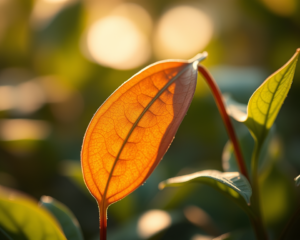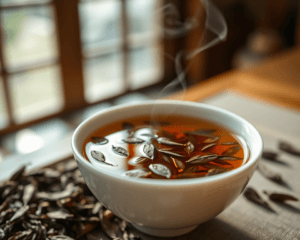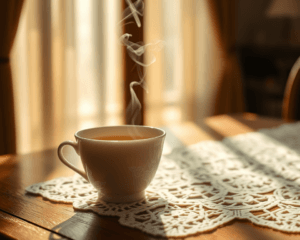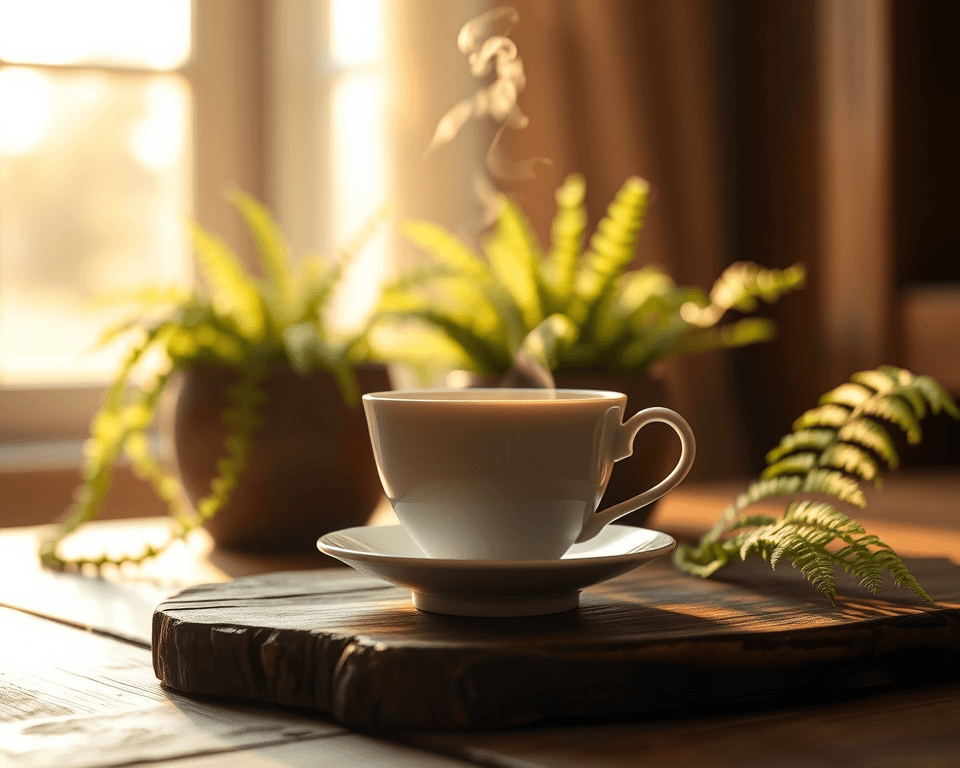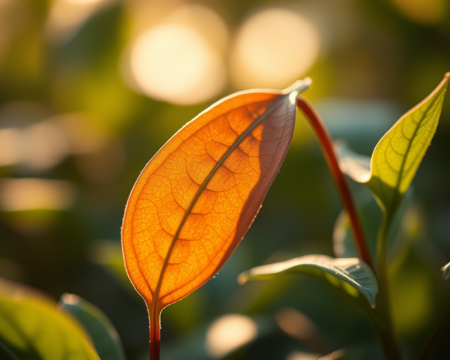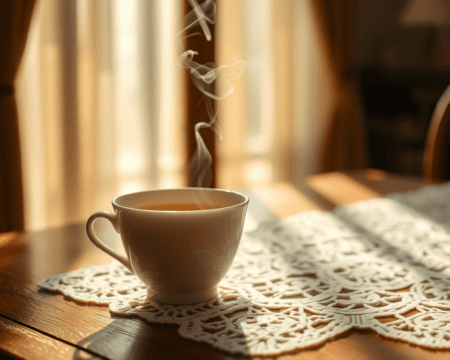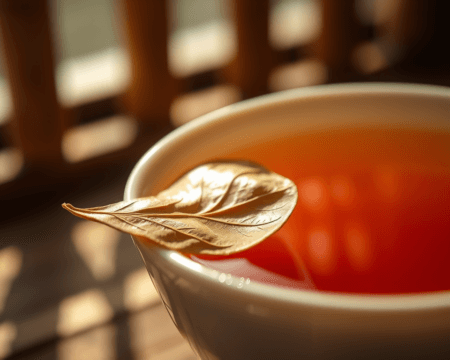Got a love for tea but find that caffeine buzz a little too much? You’re not alone! The soothing ritual of tea drinking doesn’t have to come with a side of jitters. Whether you’re looking to kick the caffeine habit or just prefer a more restful beverage, I’ve got the lowdown on decaffeinating tea. Trust me, you’ll want to know the ins and outs.
Key Takeaways
- The role of caffeine in tea culture varies globally, intertwining with traditions and personal preferences.
- Different decaffeination methods can impact flavor significantly, making it crucial to understand their effects.
- Home decaffeination techniques can be straightforward and yield satisfying results without compromising taste.
- Herbal teas offer great caffeine-free alternatives that are not only delicious but full of unique flavors.
- While decaf tea has potential health benefits, it’s essential to weigh them against possible drawbacks.
Understanding Caffeine in Tea
The Role of Caffeine in Tea Culture
Caffeine is more than just a pick-me-up; it’s woven into the very fabric of tea traditions around the world. From traditional Japanese tea ceremonies to British afternoon tea, caffeine consumption plays a role in rituals that bring people together. Everyone’s got their own take on what caffeine means to them; for some, it fuels productivity, while for others, it’s about relaxation. Understanding these cultural implications can make your tea-drinking experience richer and more meaningful.
Historical perspectives matter too. Caffeine in tea has roots tracing back centuries, and it was often viewed as a luxury and a status symbol. As tea spread globally, caffeine became synonymous with energy and alertness. However, as more people become health-conscious, the desire for lower caffeine options is rising.
How Caffeine Affects Flavor
Here’s where it gets interesting: caffeine doesn’t just keep you awake; it also impacts the flavor profile of tea. Caffeine enhances taste in a way that affects aroma, balance, and overall sensory experience. It can create a robust and lively taste, so when caffeine’s removed, the flavor can shift significantly.
Some people might argue that decaffeinated teas lack the depth of flavor found in their caffeinated counterparts. But that’s not the whole story. Different brewing techniques and the types of tea leaves used can produce a satisfying cup even when caffeine’s out of the equation. It’s all about understanding how to get the best out of your brews.
Methods of Decaffeination
Common Decaffeination Techniques
Decaffeination isn’t all one-size-fits-all; you’ve got options! Several common techniques dominate the market, each with its pros and cons.
CO2 Method: This high-tech method uses carbon dioxide in a liquid state to selectively extract caffeine while preserving flavor compounds. It’s efficient and effective but can be expensive and is typically used in commercial processes.
Water Processing: Often considered a gentle method, this technique soaks tea leaves in water. The caffeine drifts into the water, and the leaves are dried afterward. While it’s less harsh on the flavors, some taste reduction may occur.
Ethyl Acetate: Sometimes dubbed a “natural” method since it uses a substance found in fruit, this process involves soaking the leaves. It’s efficient, but there’s some debate about its taste impact.
Mechanical Methods: These involve using a machine to extract caffeine from the leaves. While not as common, these can be useful for specific types of leaves.
Each technique varies in effectiveness and flavor retention, making it essential to know what to expect before making a choice.
Comparing Home Methods vs. Industrial Techniques
When it comes to decaffeination, can you beat the pros? The answer isn’t black and white. Industrial methods like the CO2 process are great for large batches, but they can come with a hefty price tag, which you’re unlikely to pay for that afternoon cup of Earl Grey.
For home brewers looking for DIY decaffeination, the water process is probably your best bet. You can soak your tea leaves in water, but remember: you might lose some flavor. But experimenting with your own methods can yield unique results!
While commercial decaf tea often gets the job done, personal experimentation can lead to discoveries that enhance flavor profiles and offer a unique drinking experience. It’s all about efficiency, taste, and finding what works for you.
Flavor Impact of Different Decaffeination Methods
Taste Tests of Commercial vs. Home Decaf Teas
Tasting is believing! If you’ve ever bought a box of decaf tea and found it lacking, you’re not alone. Commercial decaf teas can sometimes have bland, flat flavors. Why? That’s often tied to the decaffeination process, which varies widely.
I’ve gone toe-to-toe with various brands, from Bigelow’s Decaf Black Tea to Harney & Sons’ Green Tea, and found significant flavor differences. For instance, Bigelow’s tends to have a jumpy taste—some say it sacrifices too much flavor while trying to remove caffeine. On the other hand, Harney & Sons manages to keep the vibrant green profile intact even post-decaf.
Got a little time? Conduct some of your own brewing trials and tastings. Compare and contrast flavors from both commercial brands and your homemade attempts. Your taste buds will thank you!
Personal Anecdotes from Tea Enthusiasts
Hear me out: the community of tea lovers is vibrant and full of flavor stories. Many enthusiasts swear by specific brands or brewing methods, attributing their loyalty to unique experiences. One friend of mine invested in a quality decaffeination method at home, using water processed tea leaves, and hasn’t looked back. She raves about the fresh taste reminiscent of a caffeinated cup without the jitters.
Another pal experimented with herbal teas, finding they could satisfy her cravings with delicious alternatives like chamomile and rooibos. The beauty of tea culture is that everyone has their own journey, and tapping into those anecdotes is gold for discovering new options.
Practical Tips for Decaffeinating at Home
Simple Techniques for Home Decaffeination
Ready to play tea chemist in your kitchen? You don’t need a PhD in botany to decaffeinate your favorite brews. Start by choosing high-quality, whole leaves. Those are often more forgiving and flavorful.
A straightforward method to try involves steeping your tea for a brief moment—about 30 seconds—then discarding that first brew. Yes, it seems counterintuitive, but this process leaches out a good percentage of caffeine. Use fresh water and steep these leaves again for your second brew, where you’ll notice the flavors unfolding beautifully.
If you want more experimentation, play with timing. Some teas respond better to longer steeping times than others, and patience can help develop a depth of flavor that rivals caffeinated counterparts.
Making Herbal Teas as Caffeine Alternatives
If you want a caffeine-free experience that’s not just decaf tea, let’s talk herbals! Opting for herbal brews not only sidesteps the caffeine but opens up a treasure chest of flavor options.
Some of my personal favorites include:
– Chamomile: Sweet and light—perfect before bed.
– Peppermint: The zingy freshness lifts the spirits just like a cup of black tea might.
– Rooibos: Naturally sweet and earthy, it holds rich flavors that make it a stellar stand-in.
Experimenting with infusions from various plants can lead to some warming, satisfying brews that perk you up without the caffeine rollercoaster.
Health Benefits and Considerations of Decaffeinated Tea
Potential Health Benefits of Decaf Tea
Now let’s touch on the good stuff: health benefits. Decaf tea can deliver antioxidants much like its caffeinated sibling, supporting overall wellness without the jitters or anxiety that sometimes accompany caffeine consumption.
Believe it or not, some studies have suggested that regular consumption of decaf tea can aid in heart health, help with weight management, and even support digestive health. Those are some benefits you’d want in your cuppa, right? Just be mindful of your choices; selecting high-quality brands will maximize those antioxidants and flavour profiles.
Drawbacks to Consider
Nothing’s perfect, and decaf tea is no exception. One primary concern? Potential flavor loss during the decaffeination process. You might find that the zing and punch of regular green or black tea become less vivid once caffeine’s removed.
Others worry about losing the positive effects associated with caffeine, such as heightened focus and alertness. While decaf can still be enjoyable, consider adding in some traditional caffeinated options as well—balance is key. Additionally, always check for reputable brands to avoid harsh chemical treatments that may have adverse health impacts.
With tea, it’s all about finding what works best for you. Feel free to explore the entire spectrum of tea experiences.
The passion for tea transcends mere consumption; it’s a journey of flavor and personal discovery, and focusing on both decaffeination methods and unique brewing experiences can lead to delightful cups every time. So grab your kettle, put on your favorite playlist, and experiment with your next blend!
Frequently Asked Questions
What are the health benefits of drinking decaffeinated tea?
Decaffeinated tea still retains many health benefits, including antioxidant properties that can help improve heart health and reduce inflammation. It’s a great option for those sensitive to caffeine while still wanting to enjoy the flavor and potential health gains associated with tea.
Are there different types of decaffeination methods for tea?
Yes, there are several decaffeination methods, including the CO2 method, water processing, and solvent-based techniques. Each method affects the flavor and aroma differently, with some methods preserving the taste better than others.
Can I decaffeinate tea at home?
Absolutely! Simple methods like using a quick rinse with hot water or using tea bags steeped for shorter periods can help reduce caffeine content. These methods help retain much of the original flavor while making the tea more suitable for sensitive drinkers.
What are some popular herbal teas that are naturally caffeine-free?
Popular naturally caffeine-free herbal teas include chamomile, peppermint, rooibos, and hibiscus. Each offers unique flavors and potential health benefits, making them great alternatives to caffeinated beverages.
Is there a flavor difference between regular and decaffeinated tea?
Yes, there can be a noticeable flavor difference between regular and decaffeinated teas. Decaffeination can alter the tea’s natural oils and compounds, impacting the overall taste. It’s essential to try different brands to find a satisfying flavor.
How much caffeine is typically in decaffeinated tea?
Decaffeinated tea usually contains about 2-5 milligrams of caffeine per cup, compared to 40-70 milligrams in regular tea. This amount varies based on the type of tea and the decaffeination method used.
Can drinking decaf tea help with sleep issues?
Drinking decaf tea may aid in promoting better sleep since it contains minimal caffeine. Herbal options like chamomile or valerian root are particularly known for their calming effects, making them suitable choices before bedtime.
Are there any drawbacks to drinking decaffeinated tea?
Some potential drawbacks include a decrease in certain beneficial compounds and flavors, depending on the decaffeination method used. Additionally, some commercial decaf varieties may contain additives or preservatives that could affect health. Always check labels for additives.
Can children drink decaffeinated tea?
Yes, decaffeinated tea can be a suitable option for children, particularly herbal varieties. However, it’s best to consult with a pediatrician about appropriate types and quantities, taking into account individual sensitivities and health considerations.
